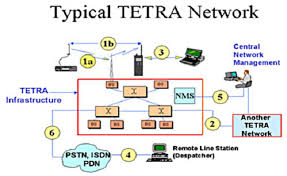What You Need to Know About WPAN: Wireless Personal Area Networks
telcomatraining.com – A Wireless Personal Area Network (WPAN) is a short-range wireless network that allows devices to communicate with each other within a limited area, typically a few meters. WPANs are used to connect personal devices such as smartphones, laptops, tablets, headphones, and wearables, enabling them to exchange data wirelessly over short distances. Unlike local area networks (LANs) that cover larger areas, WPANs are designed for individual use, providing connectivity to nearby devices in close proximity.
How WPAN Works
WPAN technology operates based on wireless communication protocols, primarily using radio frequencies (RF) for data transmission. These networks are designed to function effectively within a small range, usually between 10 to 100 meters. They use technologies like Bluetooth, Zigbee, and Infrared (IR) to facilitate communication between devices.
- Bluetooth: One of the most well-known WPAN technologies, Bluetooth allows devices to connect and exchange data over short distances (up to 100 meters). It is widely used in devices such as wireless headphones, keyboards, and smartwatches.
- Zigbee: Primarily used in applications involving home automation, Zigbee enables devices to communicate at low data rates over short distances. It is known for its low power consumption and is often used in smart home devices like lights and sensors.
- Infrared (IR): IR technology is used for short-range communication and is commonly found in devices such as remote controls and some older mobile phones.
Key Features of WPAN
- Short-range communication: WPANs are ideal for connecting devices that are within close proximity to each other, making them perfect for personal or localized networks.
- Low power consumption: WPAN technologies like Bluetooth and Zigbee are energy-efficient, making them suitable for battery-powered devices, such as wearables and IoT sensors.
- Wireless and cable-free: One of the biggest advantages of WPANs is the freedom from cables. Devices can communicate wirelessly, reducing clutter and making them more portable.
- Ease of setup and use: Setting up a WPAN is typically quick and straightforward, with no need for complex configurations. Many devices today come with built-in WPAN support, allowing for seamless connections.
- Data transfer: While WPANs are not designed for high-speed data transfer like other wireless networks, they are sufficient for tasks such as file sharing, device synchronization, and audio streaming.
Applications of WPAN
WPANs have various real-world applications, especially in the fields of personal and wearable devices, entertainment, and smart home technologies. Some common uses include:
- Personal device connections: WPANs allow for seamless communication between devices such as smartphones, tablets, laptops, and wireless accessories (e.g., Bluetooth headphones, wireless mice, and keyboards).
- Healthcare and wearables: Many wearable devices, like fitness trackers and smartwatches, rely on WPANs to communicate with smartphones or health monitoring systems. WPAN enables these devices to transmit data such as heart rate, steps taken, and sleep patterns.
- Home automation: WPANs, particularly Zigbee, play a critical role in home automation systems. Devices like smart light bulbs, security cameras, and thermostats use WPANs to communicate with each other, creating a network of interconnected devices that can be controlled via smartphones or voice assistants.
- Entertainment and media: WPANs are often used in wireless audio systems, allowing users to stream music or audio from their smartphones to Bluetooth speakers or headsets without the need for physical connections.
Advantages of WPAN
- Cost-effective: WPAN technologies are generally less expensive than other wireless solutions like Wi-Fi, making them a more affordable option for personal and consumer devices.
- Low interference: WPANs operate on specific frequencies that are less crowded, reducing the chances of interference from other wireless networks and devices.
- Security: WPAN technologies, especially Bluetooth, have strong security measures in place to protect the privacy and data integrity of the devices communicating within the network.
Conclusion
WPANs are an essential part of modern wireless communication, providing a convenient and efficient way to connect personal devices in close proximity. With technologies like Bluetooth, Zigbee, and infrared, WPANs are used in various applications, from personal gadgets and wearables to home automation and entertainment. They offer significant benefits such as ease of use, low power consumption, and wireless convenience, making them indispensable for the connected world of today. As the demand for smart devices and IoT solutions continues to rise, WPANs will remain a key component in the network infrastructure of the future.







